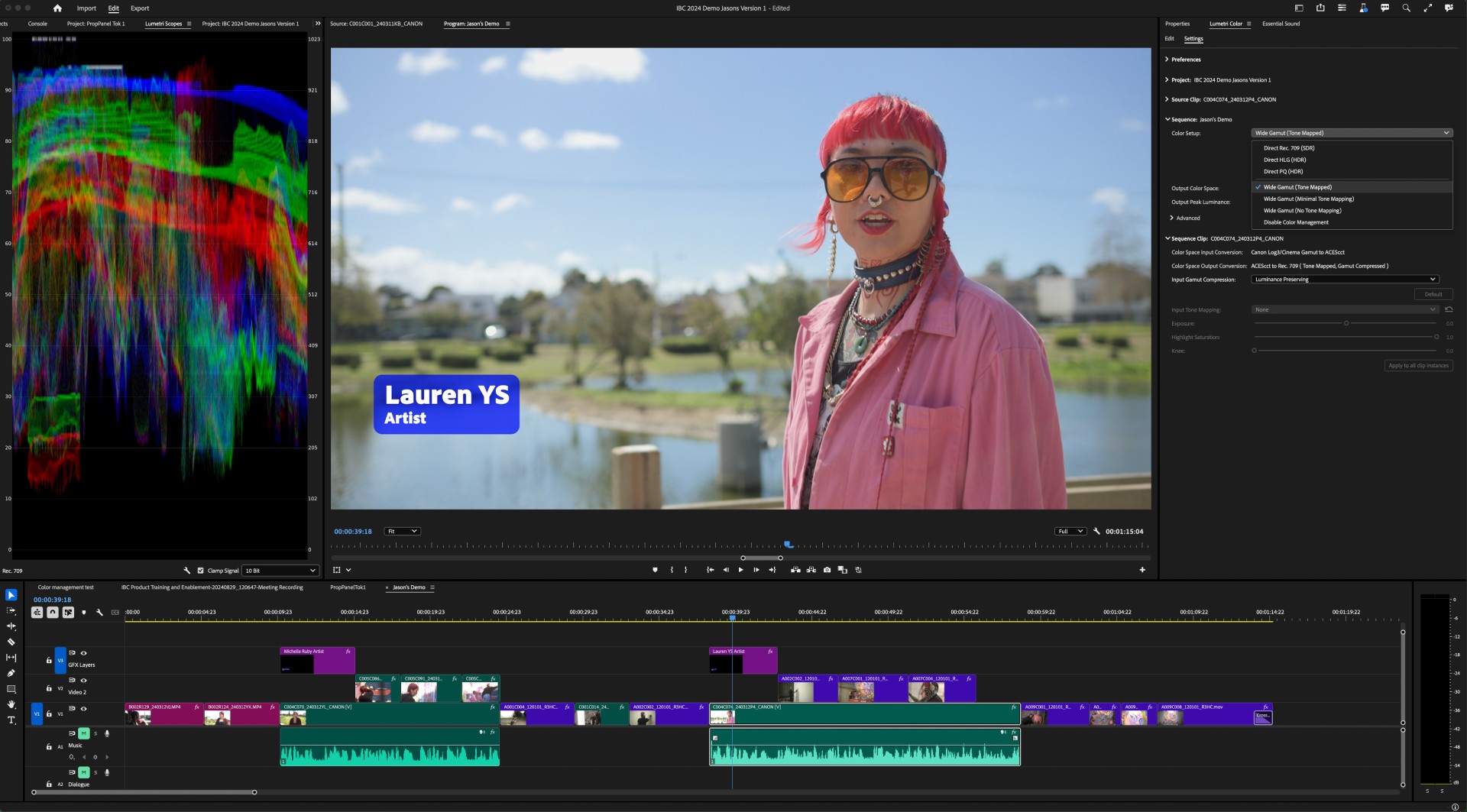
Film-making and video editing is a rewarding profession, but not everything about it is great at the moment. Budgets everywhere are tightening, teams are getting smaller, and the pressure to achieve more in less time and with fewer people is rising all the time.
In this light, Adobe's big update to its flagship video editing software, Premiere Pro, will be of particular interest to anyone who hasn't gone home on time lately. Because it includes some useful new features aimed at improving overall workflow efficiency and, in particular, transforming the way video professionals deal with color.
Launched ahead of IBC 2024, these updates are currently available in beta to subscribers and are expected to roll out in full this fall. Read on to find out what's changed.
No need for color grading
At the core of the update is a dramatically reimagined color management system, which bypasses the manual color-correction process entirely.
Traditionally, video editors have relied on look-up tables (LUTs) to convert RAW and Log footage into usable color formats. However, Adobe's new system eliminates the need for LUTs, instead automatically transforming RAW and Log footage from "virtually any camera" into standard dynamic range (SDR) and high dynamic range (HDR) formats.
This means, at least in theory, that video editors can begin working with color-graded footage right away, cutting out a major step in the process and saving everyone a lot of time and money.
The new color management system is built on the Academy Color Encoding System (ACEScct), an industry-standard color space used in Hollywood. This, Adobe says, ensures high-fidelity tone mapping, and broad compatibility across a wide range of devices and display technologies.
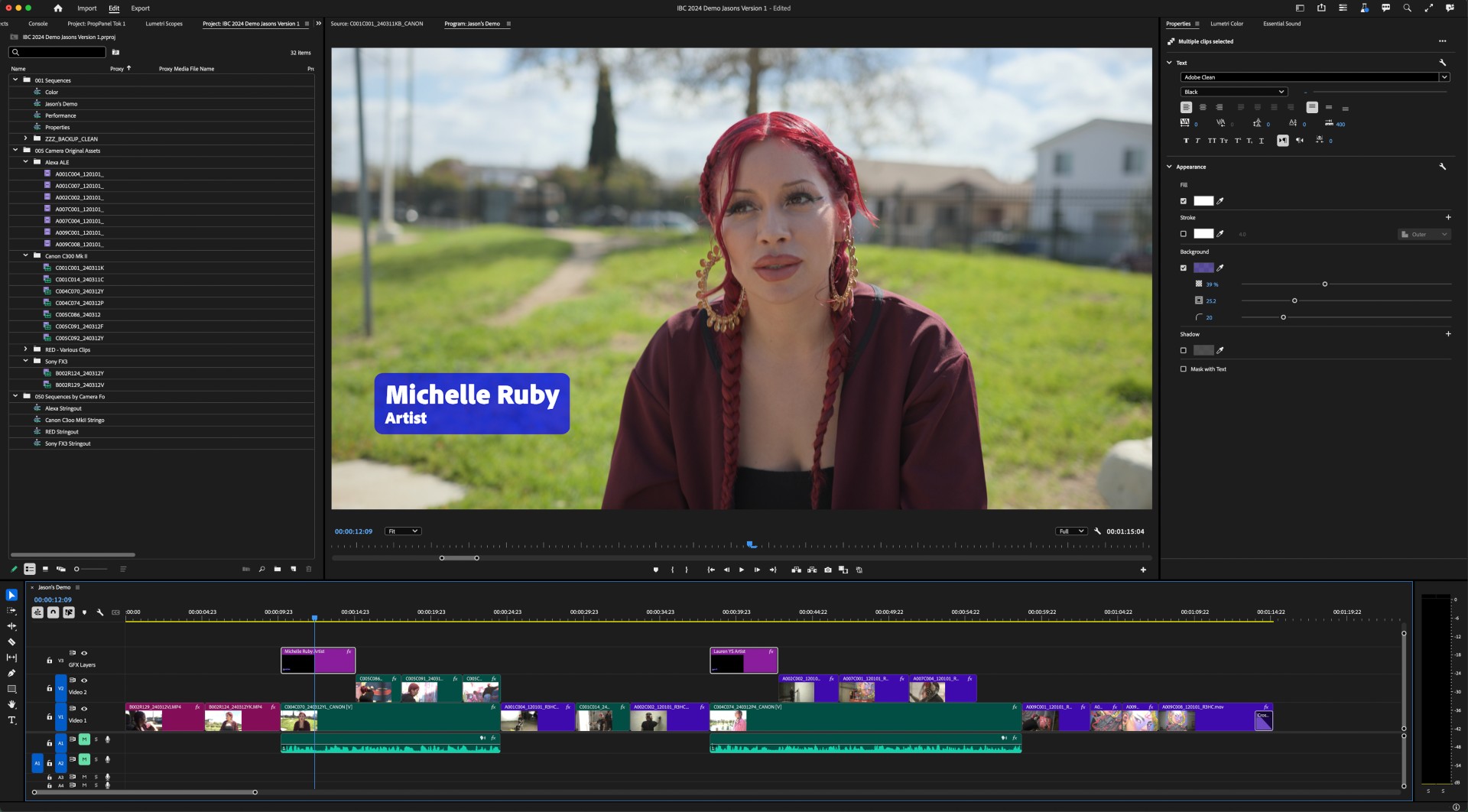
And this is just the start, explained Jason Druss from Adobe's product marketing team, during a presentation to journalists. "We're serious about color," he said, "and this new color management system is just the beginning of making professional color workflows more powerful and accessible for video editors, right inside Premiere Pro."
To make things as easy as possible for editors, Adobe has organized the new color management system around six "set-it-and-forget-it" presets, which let you toggle between traditional Rec.709 (for legacy projects) and the new ACEScct wide-gamut color space.
The latter enables editors to work with a greater dynamic range and color depth, and is recommended for high-end video production and HDR content.
Notably, some of the most-used effects within Premiere Pro, including the Lumetri color panel, are now fully color-space aware. This means that adjustments to skin tones, highlights and shadows will be more accurate and smoother across different color profiles. And that should give you a bit more flexibility when you need to create a specific look or feel for a project.
New Properties Panel
As well as the color management system, Premiere Pro now has a new Properties panel, which has been created to help you complete tasks with less fiddling around and opening up of menus.
This new, context-sensitive panel consolidates frequently used tools, effects and adjustments into a single location, saving you from having to navigate through multiple menus and panels to get stuff done. For example, you can now crop video clips directly within the Program Monitor.
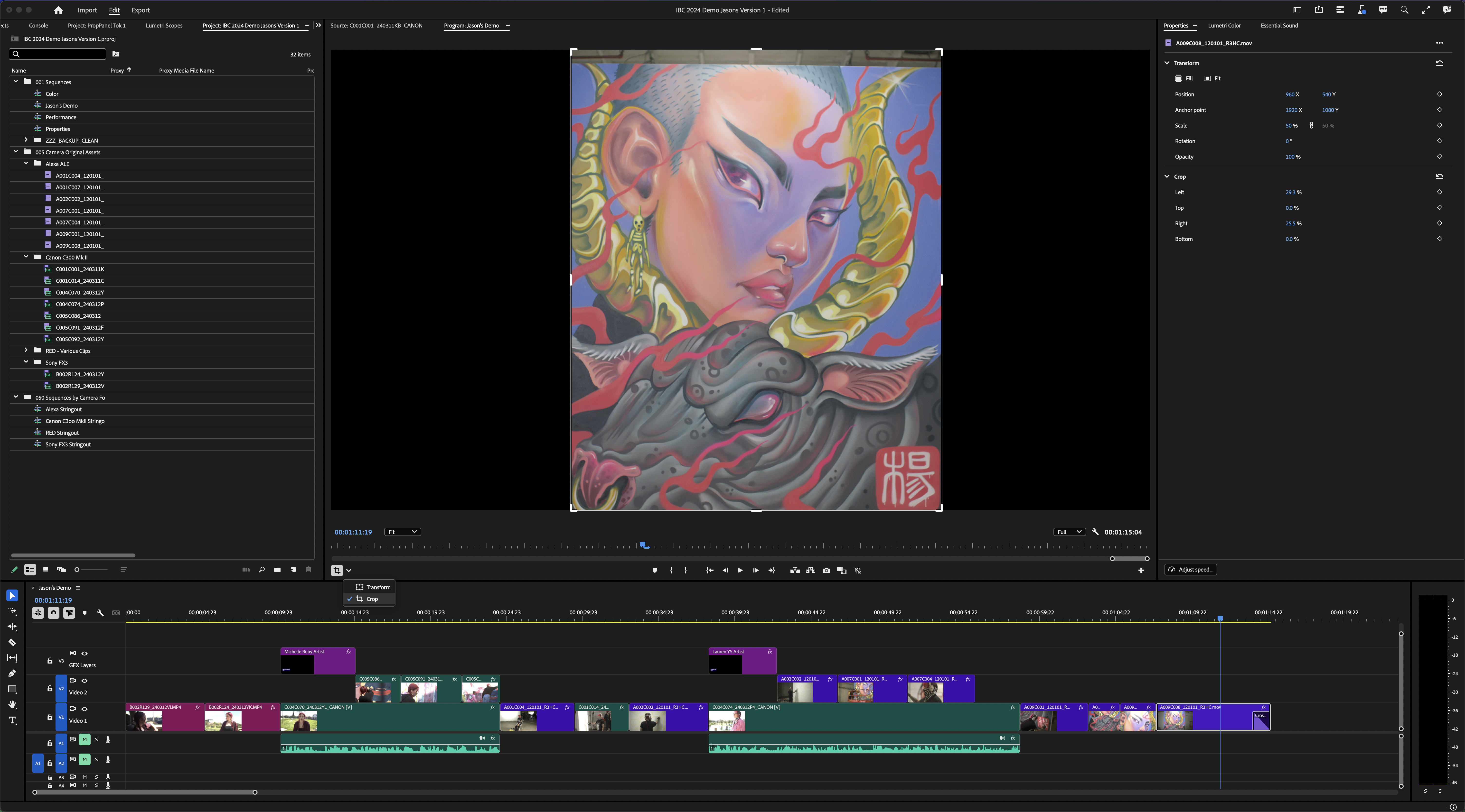
The panel also allows for batch adjustments, so you can apply changes to multiple clips or graphics simultaneously. This should speed things up a lot for anyone working with complex timelines or large volumes of footage.
At the presentation Anna Lehman, a designer on the Premiere Pro team, emphasized Adobe’s ongoing commitment to improving the software’s usability. "The Properties panel is contextual to your workflow," she explained, "so you don't have to navigate between all of those 20 plus panels in Premiere to find the controls that you need."
Performance enhancements and format support
Away from the headline features, Adobe has also done work under the hood, to making Premiere Pro run faster on the latest computers. So it's further optimized the software to take advantage of hardware acceleration, which should means faster playback and smoother editing of high-resolution footage, especially for popular codecs like AVC and HEVC. Meanwhile, Adobe says that exports of ProRes files are now up to three times faster.
Premiere Pro also now supports a wider range of native camera formats from manufacturers like Canon, Sony and RED. This should make it easier for editors to start working with RAW files directly in Premiere Pro, without the need for a lot of time-sucking transcoding .
Integration with Adobe’s other Creative Cloud applications has also moved forward in this new release. For instance, when you're working with After Effects via Dynamic Link, you should now notice more accurate color representation between the two applications; reducing the need for manual adjustments during final render.
New-look UI
Alongside these functional improvements, Adobe has also given Premiere Pro’s UI a brand new look. The redesigned interface now offers two dark modes, a light mode, and a high-contrast accessibility mode. These new themes are designed to reduce eye strain and make staring at the screen more comfortable over time, which could be useful for anyone working lots of late nights.
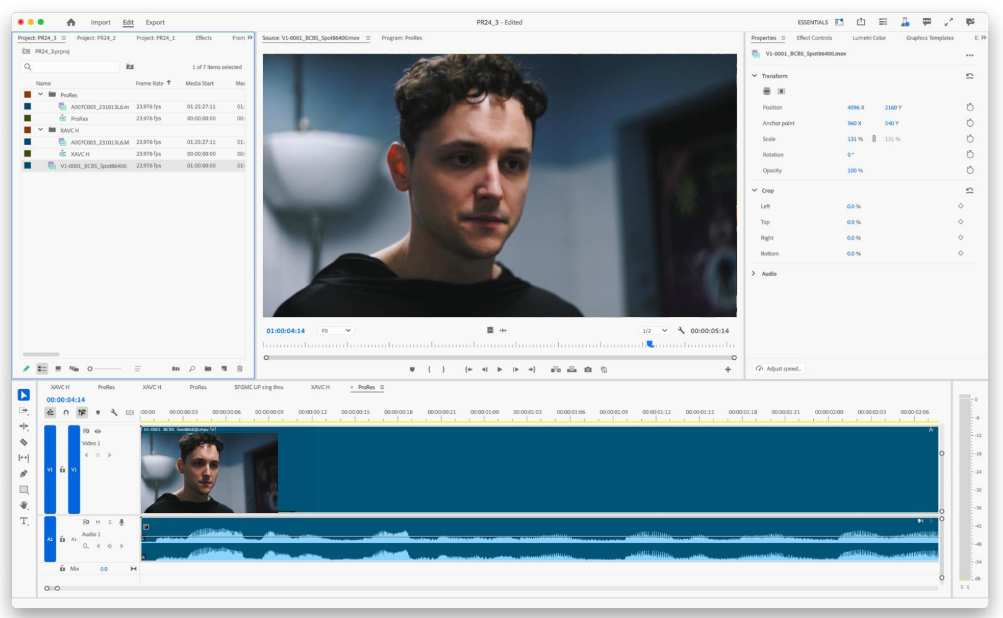
The updated interface also includes cleaner typography and redesigned icons, improving the overall look and feel of the software while maintaining consistency with other Adobe Creative Cloud applications. These visual changes are pretty subtle on the whole, but effective all the same. In other words, you'll still recognize everything easily, but it should all look just a little nicer.
What’s next?
Adobe’s latest update to Premiere Pro is interesting enough in itself. But it's also fascinating to hear the reasoning behind it, and what that means for the company's strategy for the next few years.
In the presentation to journalists, Adobe's reps made it clear they understood what's happening in the real world with their software. Namely that, with the rapid rise of short-form content on platforms like TikTok and Instagram, video editors are under increasing pressure to produce high-quality content quickly and efficiently.
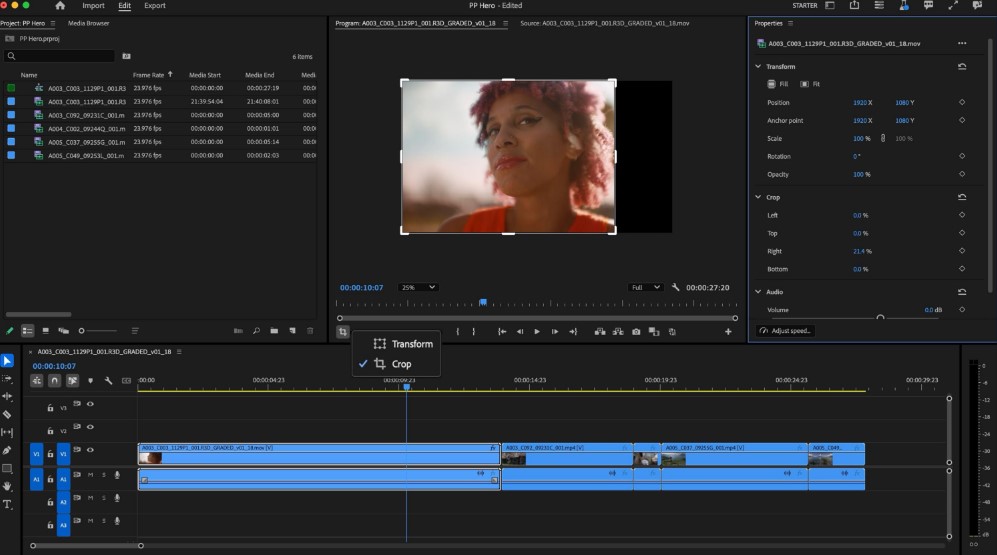
These new features aim to help with that. Looking ahead, Adobe plans to continue refining Premiere Pro’s color management capabilities and expand its integration with other Creative Cloud applications.
The company says it's actively seeking feedback from its user base to guide future updates and ensure that Premiere Pro remains a versatile and powerful tool for filmmakers and video editors of all skill levels.
See our rundown on the best video-editing software currently available







